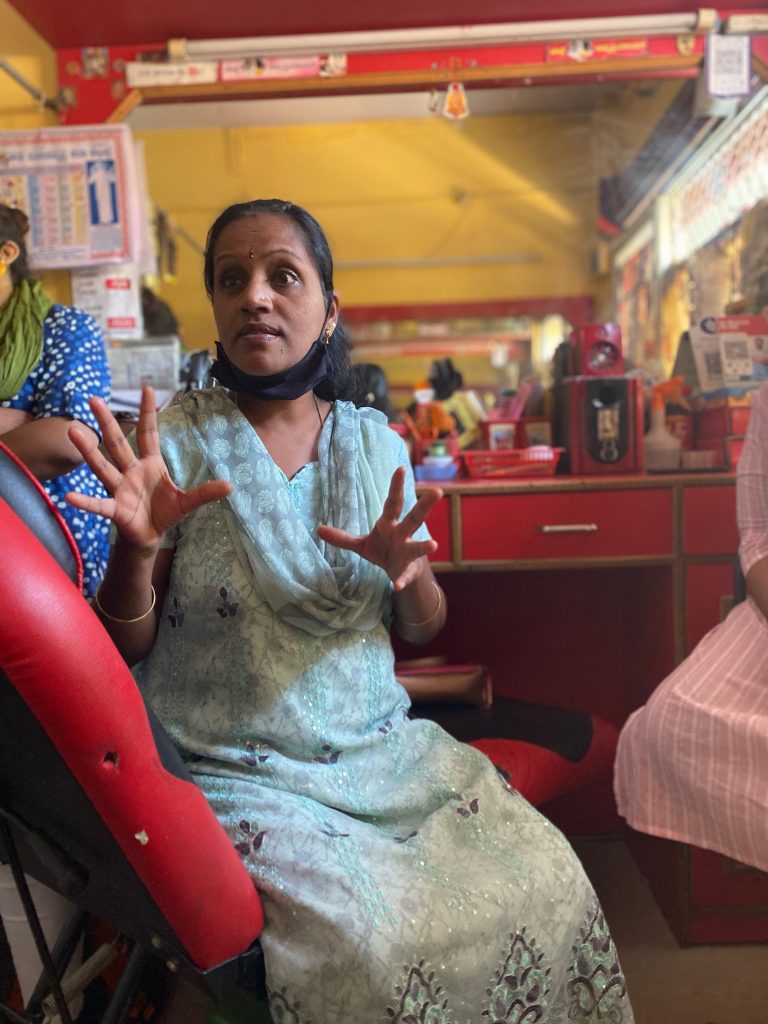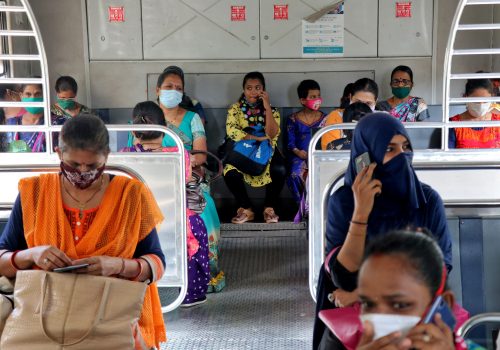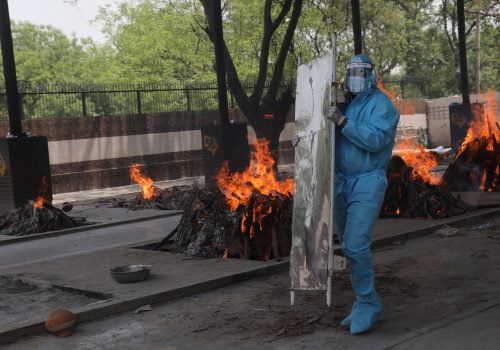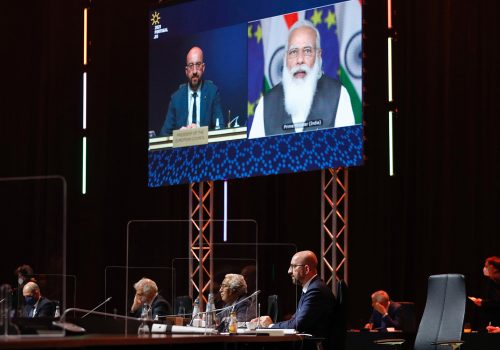This piece follows three business owners in India whose livelihoods have been crippled by the COVID-19 pandemic. All of them are participants of the REVIVE initiative by Samhita.
Noor, a business owner from Ahmednagar, India, had been running her own parlor when the March 2020 lockdown came into force. While she and her family initially relied on their savings, they had to eventually borrow money from neighbours to make ends meet. As parlors were mandated to remain closed during this time, Noor used some of the money to start a tiffin service business. From January 2021, she started seeing a few customers at her original parlor while concurrently running the tiffin business. However, due to the second wave, both her businesses have been forced to shut down. With great difficulty, Noor found another job as a house cook, and is making enough to manage basic household expenses while her husband remains unemployed. Hopeful of recovery this year, Noor had made many plans–one of which was to send her daughter to an english-medium school–but because of the ongoing crisis, this has proven to be impossible.
Payal (from Delhi, India) too has been running her own parlor, but she and her husband have had no source of income since April 2021. “We are only consuming a bare minimum amount of food,” she says, “that which is necessary. Even though it’s mango season, I have not been able to buy any for my family”. Her mother recently tested positive for COVID-19 and suffered a high fever for one week. This, combined with the second COVID-19 wave, has left them feeling terrified. As parlour work is high-contact, Payal says that she feels unsafe about going out even when lockdown restrictions do eventually lift.
Kabir, also from Delhi, set-up a grocery store in January 2020. As he began establishing connections with his customers and generating a stable income, the three-month lockdown was imposed to curb the spread of COVID-19. This shut down his store permanently. In October 2020, Kabir launched another venture–making and selling masks–and grew it into a bigger handloom business while introducing other products over time. “Even this shop is closed now; the second wave and lockdown have prevented it from becoming stable. There is no way to earn an income if this keeps happening,” comments Kabir.
These are stories of but a few among millions who have lost multiple livelihoods because of the COVID-19 pandemic. It is clear that everyday people tried to absorb the damaging and continuous effects of the crisis, doing all they could to initially maintain some source of income. Without adequate and timely responses from both the government and private institutions, all they can rely on is their own resilience.
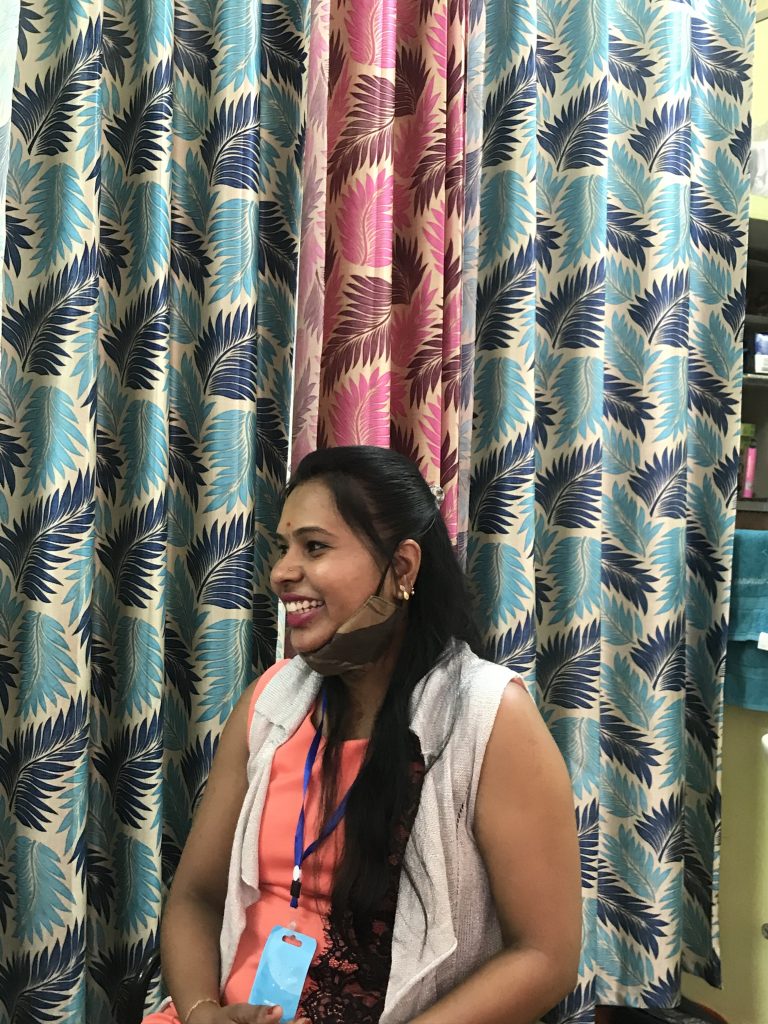
However, the second COVID-19 wave has been exponentially more devastating. This is in part because of the rise in cases, increased severity of symptoms, and more deaths amongst a crumbling healthcare delivery system. And, it is coupled with an additional livelihood shock layered onto an ongoing burden. Many are dipping into their modest savings to make ends meet and reducing food consumption to survive. They have had to make tough decisions–to not pay fees for their children’s education, delay non-COVID-19 related surgeries, and stay indoors at all costs even though that has not guaranteed security. This has left people uncertain about their emotional recovery and economic revival. To distribute the burden of this recovery more equitably, we need to employ prompt solutions that support the most vulnerable.
Policy recommendations:
1. Small business owners should be provided monetary support to stay afloat in the present and working capital to restart their livelihoods in the future. One of the ways to deliver this effectively is to use a blended finance model of pooling in resources from companies and foundations, to provide direct benefit transfer (DBTs), and returnable grants. DBTs will offer much needed relief during the peak months of the crisis. Providing returnable grants to financially underserved communities will help people revive their businesses which otherwise might not be possible. Such a model, which is based on zero interest and no legal obligation to repay, will allow businesses the space and time to recover.
2. For people to safely rejoin the workforce or continue providing essential frontline services and commodities, they need to be vaccinated. Kamlaben, a vegetable vendor from Ahmedabad says, “Police demand ‘health cards’, ‘negative RT-PCR report’ or a ‘vaccination card’ from us and don’t let us sell without it.” In addition to being fraught with procurement challenges, India’s current vaccination drive also reinforces existing inequities. The online registration-based model and limited walk-in facilities have led to the exclusion of poor and marginalized communities from the vaccination drive itself.
A lack of access to vaccines not only limits people’s ability to earn income and establish a bare minimum standard of living, but more importantly impairs their basic rights to life and health. With the novel nature of this virus, knowledge around efficacy and side-effects of the vaccines has been riddled with misinformation. Hence, to assume vaccine hesitancy only among poorer sections of the population would be incorrect. Therefore, it is most valuable to first understand the gaps in information and accessibility among underserved communities. Consequently, we need to invest in awareness programs on knowledge, attitudes, and practices related to vaccines. This must be supplemented with support from on-the-ground organizations to help provide their communities access to the vaccine through online registration or walk-ins. The vaccine should also be prioritized for people on the frontlines, not only in policy but also in implementation.
3. Before the pandemic, 90 percent of India’s poorest did not have access to health insurance and typically dipped into savings, borrowed, or delayed treatment in case of a health emergency. The COVID-19 crisis has not only led to unparalleled health shocks, but it has also led to inequitable systems of recovery, thereby further widening the inequities in health resources. This compels us to redesign insurance policies to suit the needs of those who need them most. In addition, we should also think of innovative ways to establish a health safety net such as a health savings account. According to a randomized evaluation in Kenya, access to savings products leads to substantial increases in preventive health investments and reduced vulnerability to health emergencies. Private companies can support individuals by funding initial instalments of these savings accounts.
When thinking about tackling further waves and eventually recovering from COVID-19, we should keep the needs and experiences of people–especially those most vulnerable–at the center of our approach, strategy, and implementation. While many have shown and continue to show tremendous self-reliance, there is a crucial need to reduce the burden of recovery on individuals.
Iti Bhargava is a senior associate for Research & Knowledge at Samhita – CGF.
Ojas is a manager for Research & Knowledge at Samhita – CGF.

The South Asia Center is the hub for the Atlantic Council’s analysis of the political, social, geographical, and cultural diversity of the region. At the intersection of South Asia and its geopolitics, SAC cultivates dialogue to shape policy and forge ties between the region and the global community.
